It’s all about Art Deco in Napier, the architectural style that typifies many of the buildings that rose from the devastation of the Hawkes Bay earthquake. The earthquake shook Napier’s business district from its foundations on the morning of 3 February 1931.
More than 250 people died in the Hawkes Bay region and buildings that didn’t collapse in Napier’s city centre initially were then mostly destroyed by fire and subsequent aftershocks.
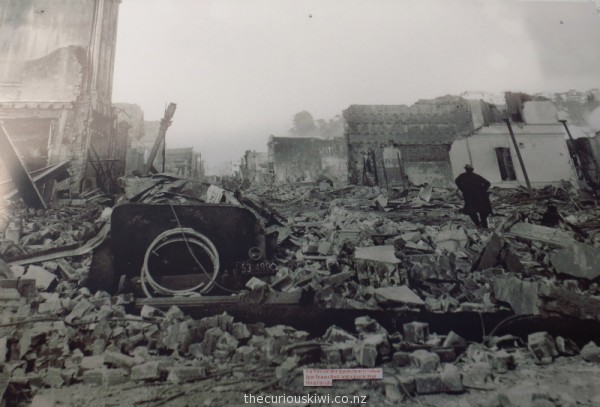
One of the photos on a wall in the city – looking down Upper Emerson Street after the earthquake
But like the Art Deco image of the rising sun, Napier’s city centre rose again and by 1933 was almost entirely rebuilt. Four local architecture firms worked together resulting in a mix of designs popular at the time including Spanish Mission, Prairie Style and most notably, Art Deco.
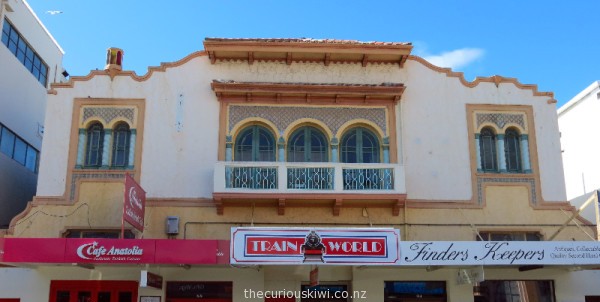
Gaiety Theatre, 88 Dickens Street – Spanish Mission style
Today Art Deco Trust at 7 Tennyson Street offers guided walks and tours, and generally works to promote and preserve Art Deco in Napier. The Trust also organises the annual 1930’s themed Art Deco Festival in February, and it’s not just about the architecture, visitors dress in Deco attire and vintage cars line the streets.
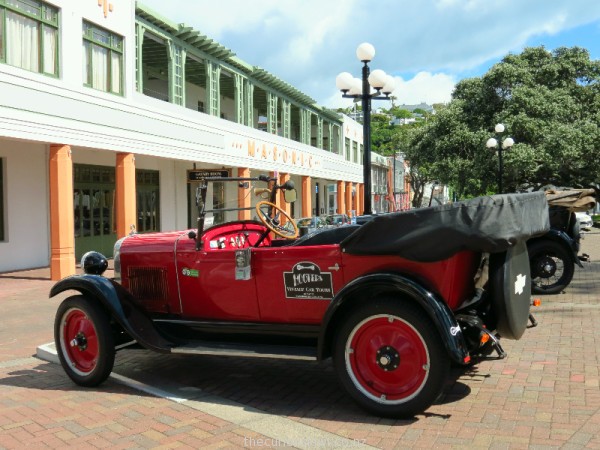
Tour Art Deco Napier in a vintage car
I bought a self-guided Art Deco walk brochure ($7.90), you can also download it, handy if they run out of brochures as they had last time we were in town. I learned that decorative features like zig zag motifs, geometric patterns and the rising sun characterise Art Deco style. (Halsbury Chambers below is not in the brochure, but the design above the door looks like the rising sun to me, however the building is described as Stripped Classical style).
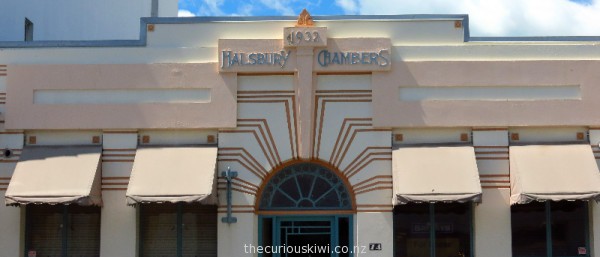
Leaping deer, greyhounds, prancing women, and fountains are popular too as ‘symbols of freedom and the dawn of a new age’. I didn’t see any leaping deer but the dog in the ‘A Wave In Time‘ bronze statue on Emerson Street looks like a greyhound and Sheila could be prancing.
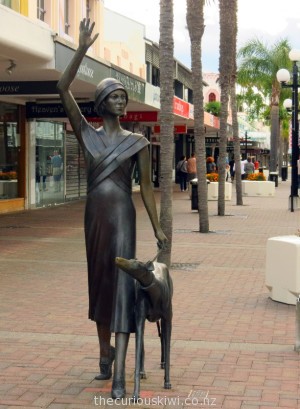
Sheila & Raven by Mark Whyte
The Daily Telegraph building has plenty of Art Deco elements including symmetry, zig zags, small fountains (underneath the letters), and geometric shapes on the metal balcony.
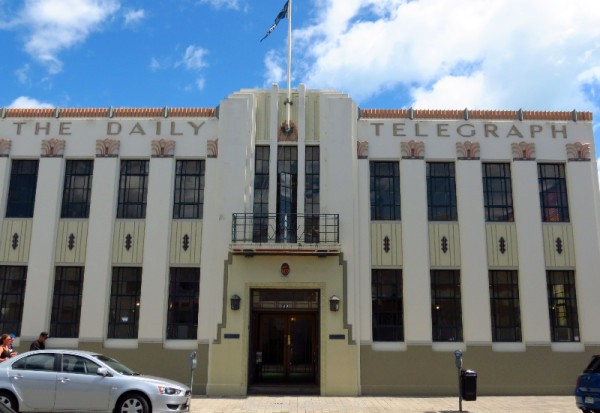
Daily Telegraph Building, 49 Tennyson Street
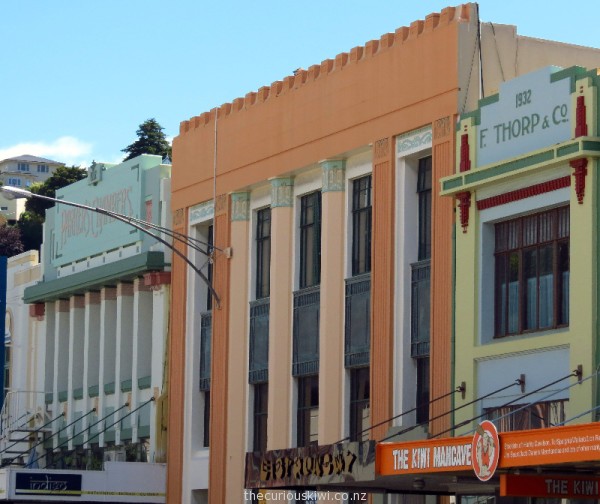
Three Art Deco buildings on Hastings Street (Thorp building has also been described as Prairie Style)
The orange building above is the former Bank of New South Wales, the patterns (below) are Mayan ferns and flowers, another decorative feature of Art Deco. The brochure notes that the discovery of King Tutankahmen’s tomb in 1922 created interest in ancient cultures.

Mayan fern and flower patterns on the former Bank of New South Wales building
The Hurst’s Building below was one of only two Art Deco style buildings Napier had before the earthquake, it’s the only one that survived.
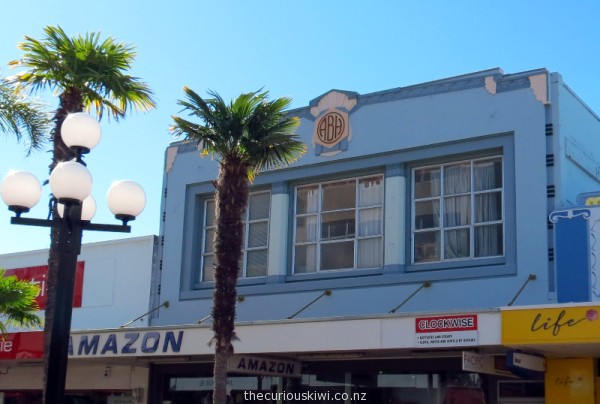
Hurst’s Building, 125 Emerson Street
Sunbursts and zig zag borders are obvious features of the former Hotel Central on the corner of Dalton and Emerson Streets.
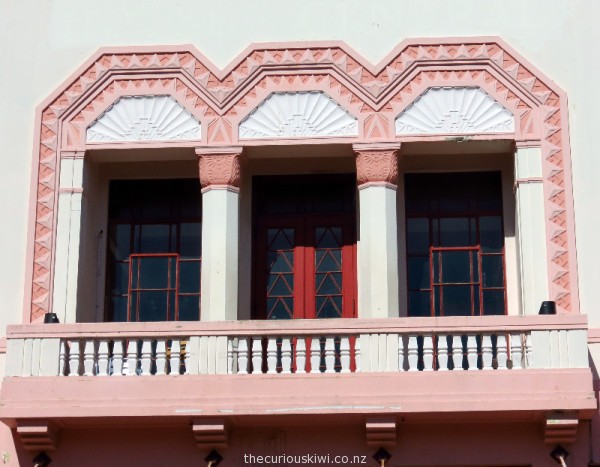
Part of the former Hotel Central
One feature that makes Napier Art Deco unique to the rest of the world is the use of Maori designs. A good example is the interior and exterior of the ASB Bank on Emerson Street. If you are especially interested see the brochure Maori Deco in Napier.
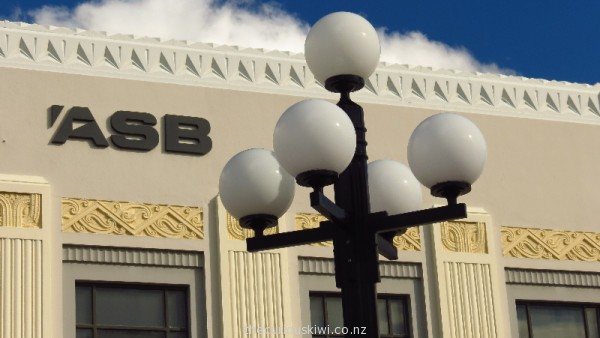
Exterior of ASB in Napier incorporates Maori designs
Visitors are welcome to take photos inside the bank. The red, black and white designs are kowhaiwhai patterns and are often found on the rafters of Maori meeting houses.
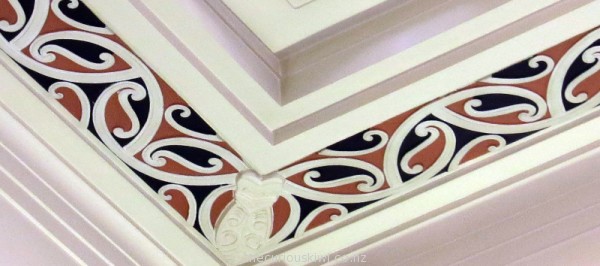
Kowhaiwhai patterns on the interior of ASB in Napier
Another example of Maori design is on the exterior of Napier Antique Centre at 65 Tennyson Street.
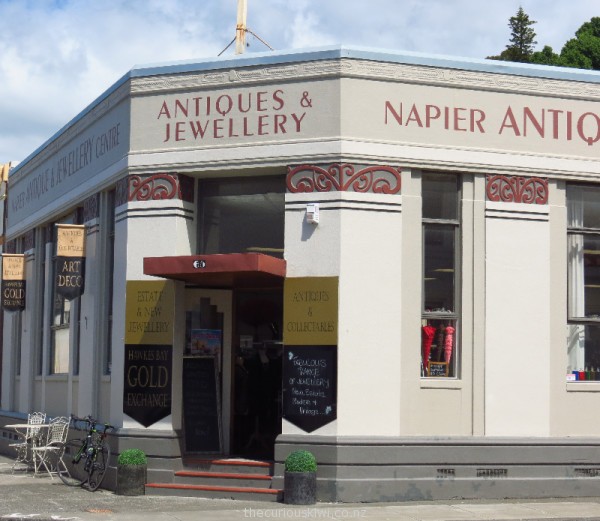
Napier Antique & Jewellery Centre
If you’d like to theme your visit with a stay in an Art Deco hotel, next on the blog is a post about Masonic Hotel.

Ok, you’ve officially made me wish I lived in Napier–or at least you’ve made me want to visit! Cool tidbit about Maori Deco, those aren’t two things I’d ever thought of combining.
Hi
That’s really nice to read, thank you.
One of the things I like most about visiting Napier is that there is plenty of accommodation on or around Marine Parade (which is on the edge of the little CBD) so you can walk pretty much everywhere. The sea runs parallel to Marine Parade also, it’s a shame it’s too dangerous to swim in but I always like to sit and watch the waves for a while, and take a walk down the seaside path.
I really enjoyed writing this post and learning to differentiate Spanish Mission from Art Deco etc and I’m keen to follow up on the Maori / Art Deco connection so there may be a post about it in future.
If you do get to Napier I’d love to hear your thoughts about it either here or via email.
Happy travels.